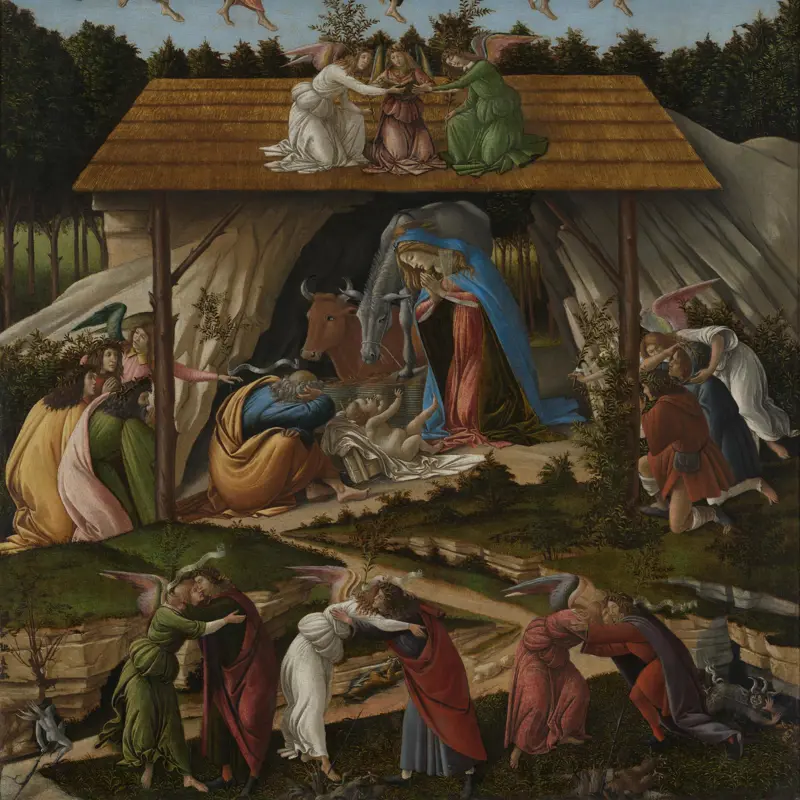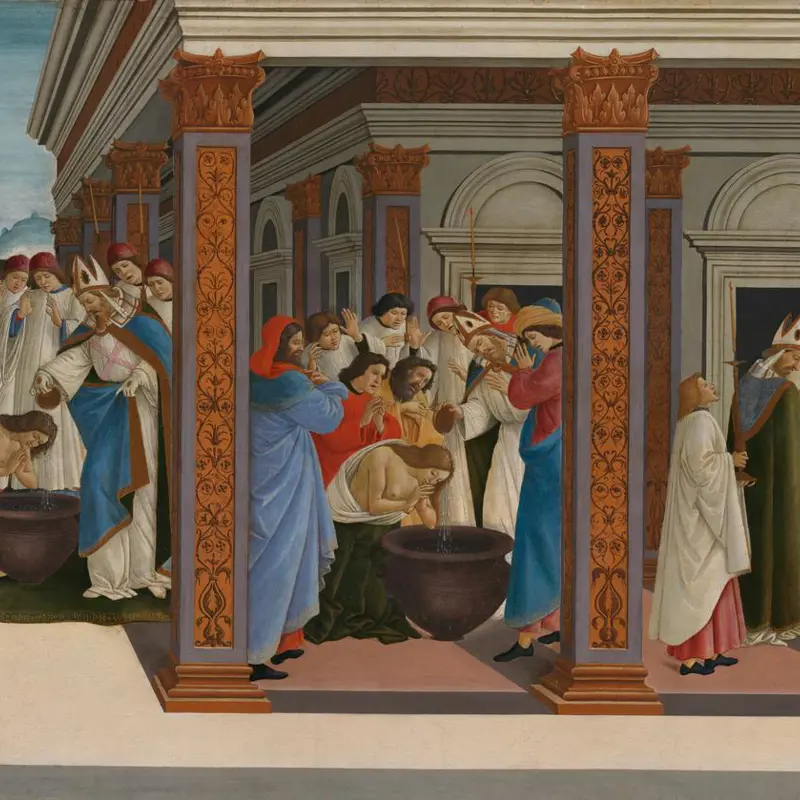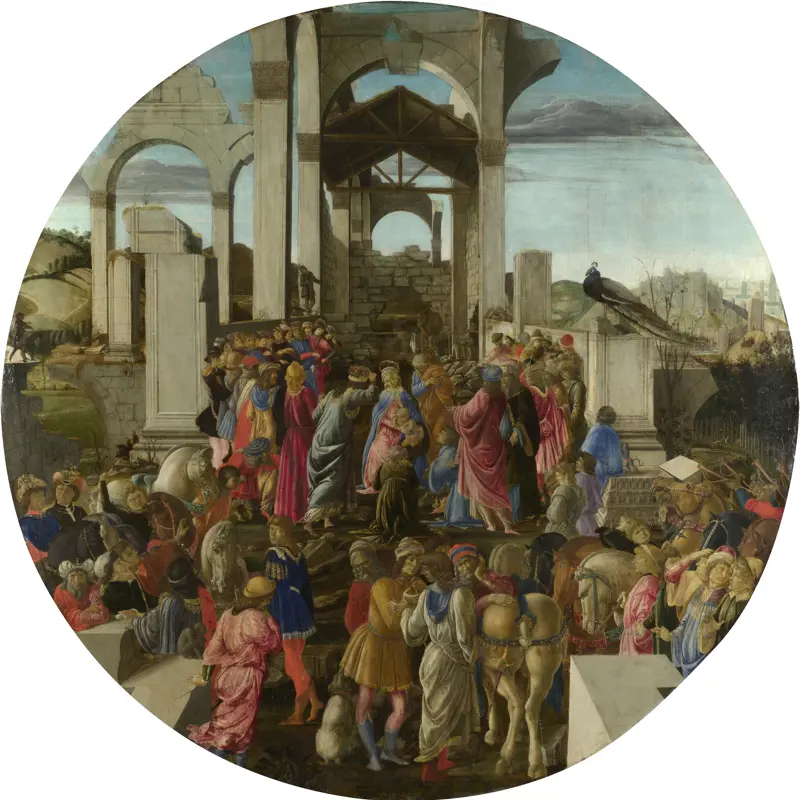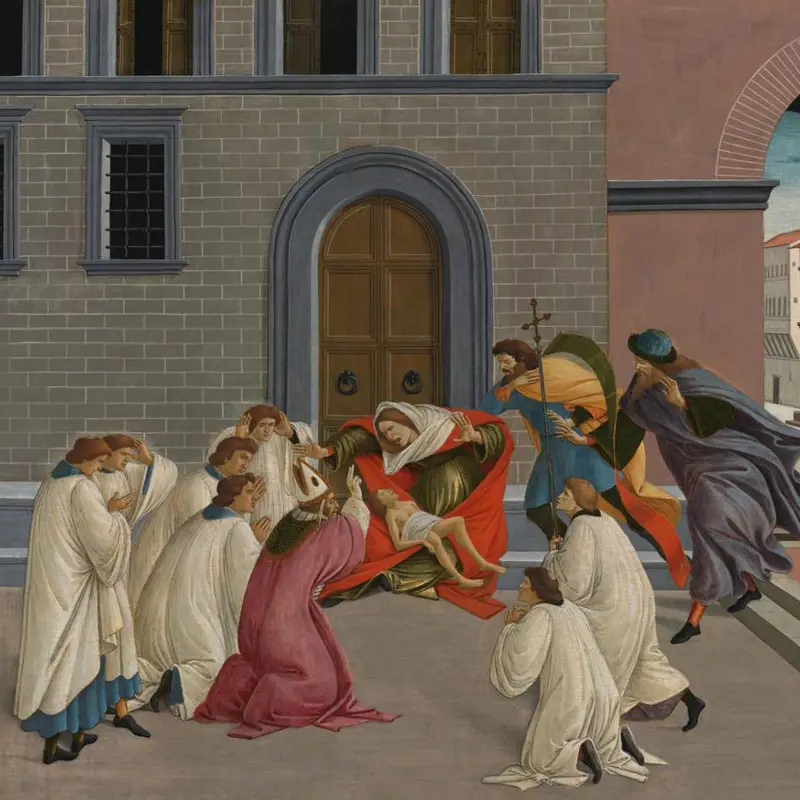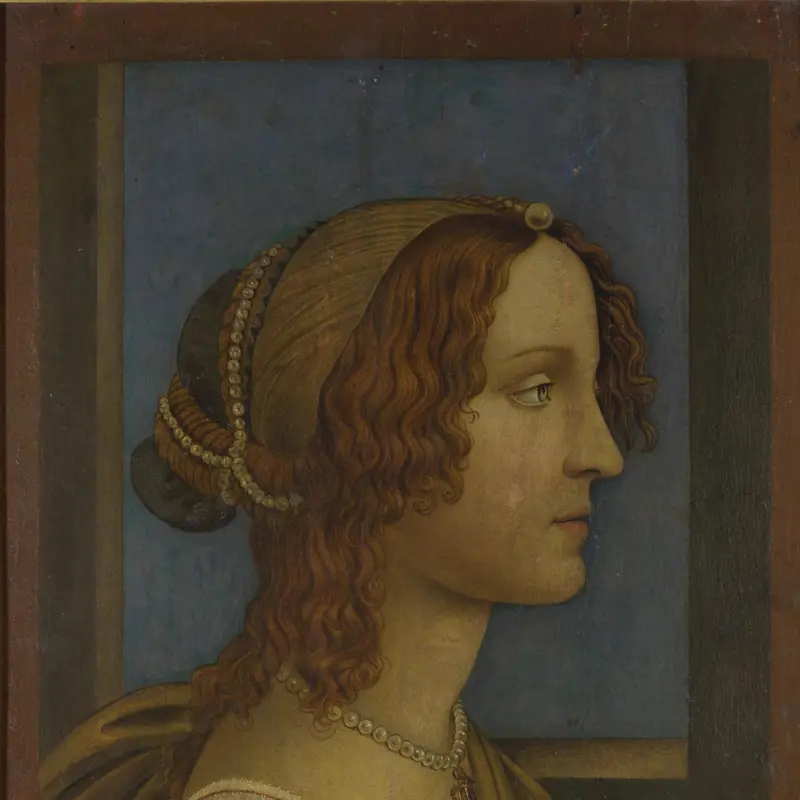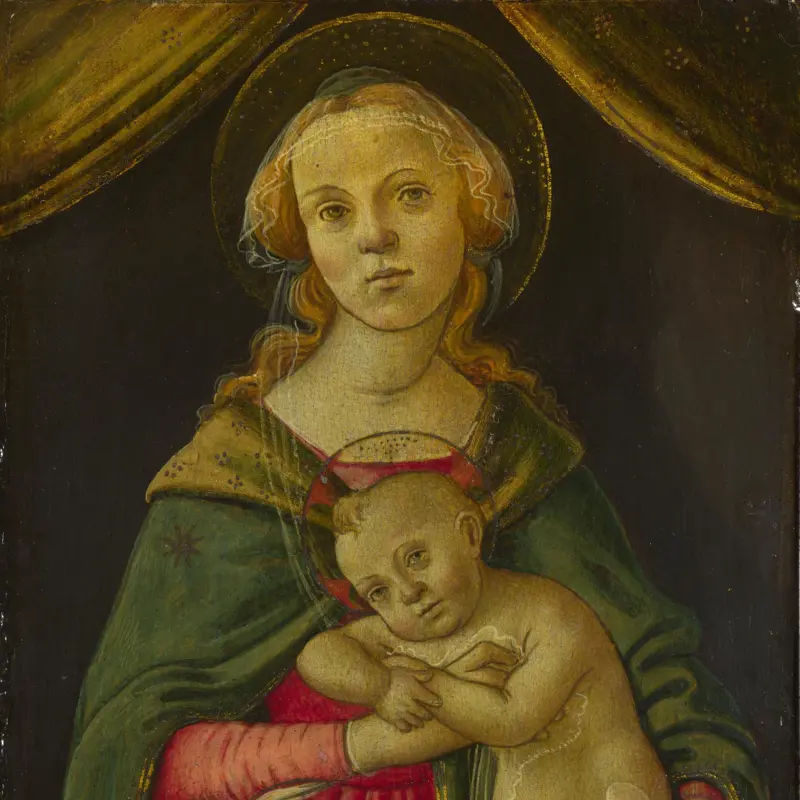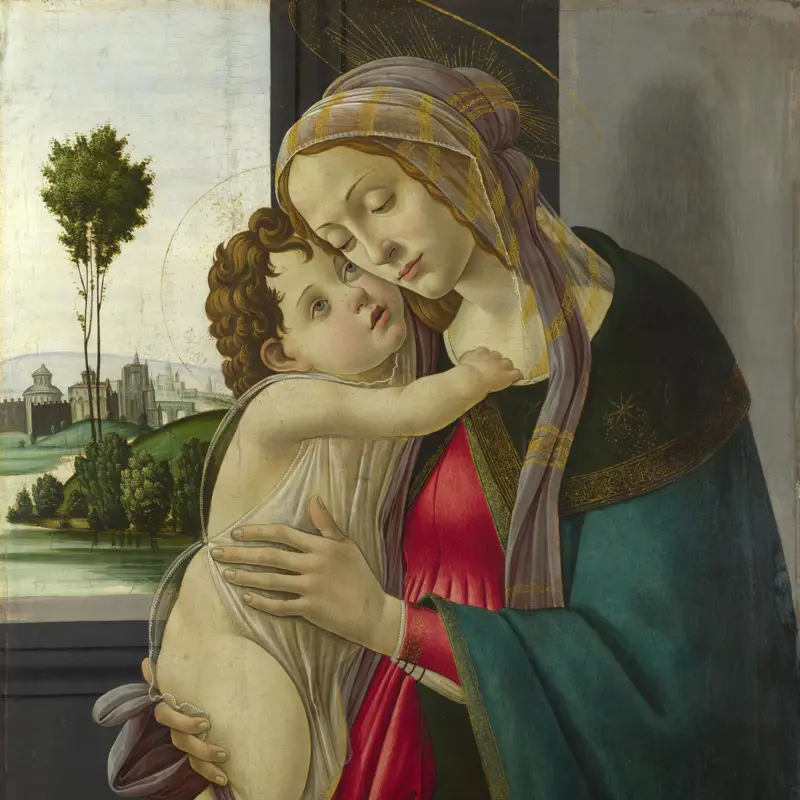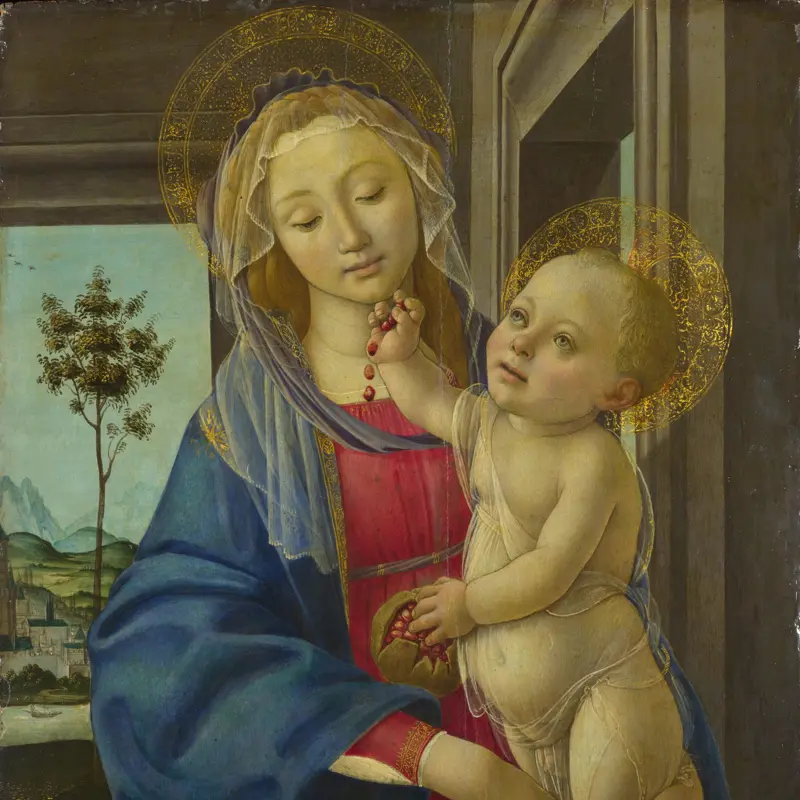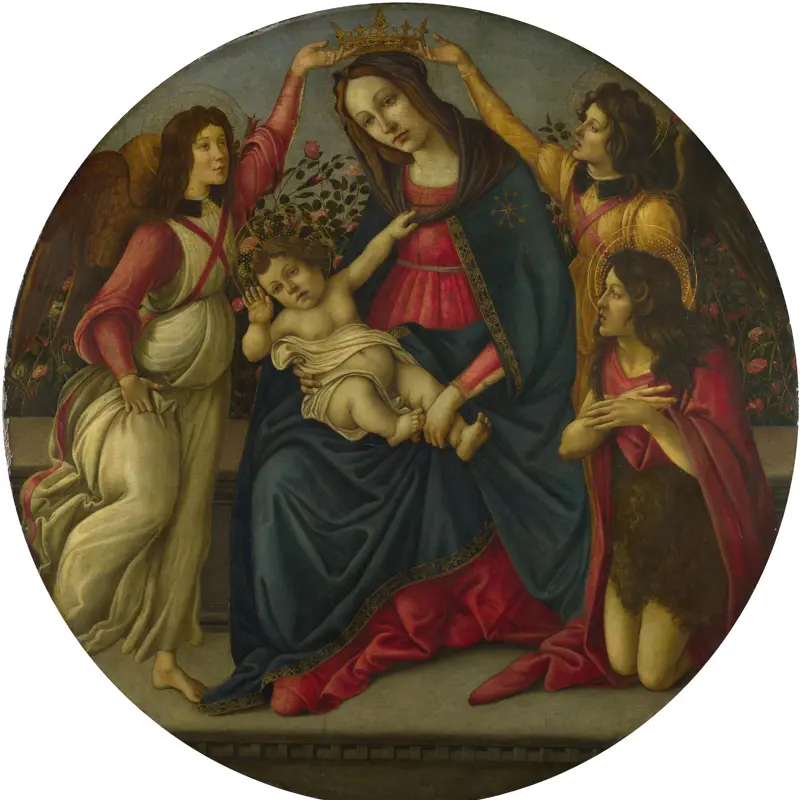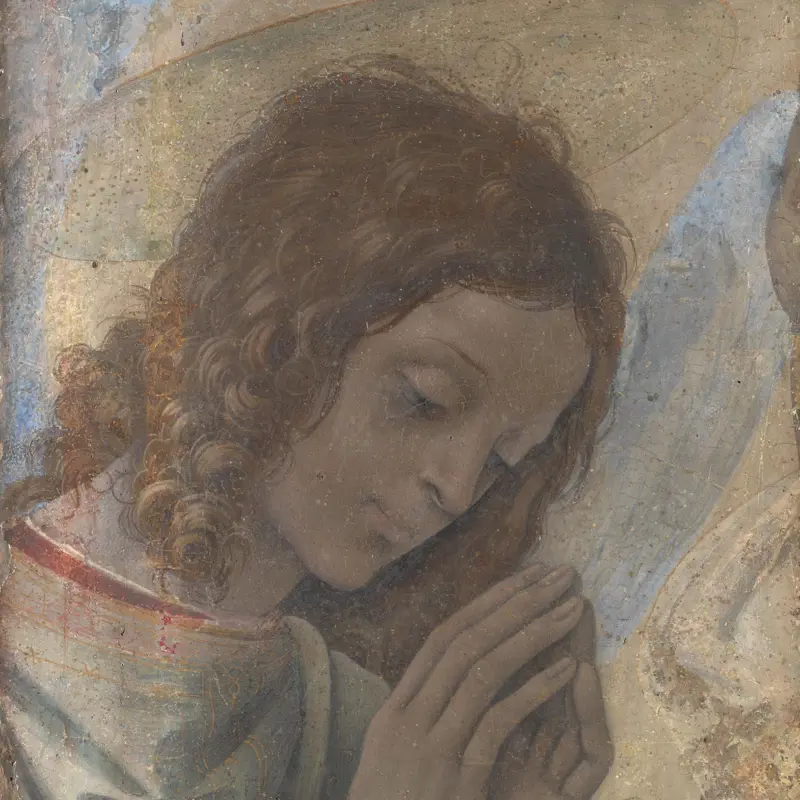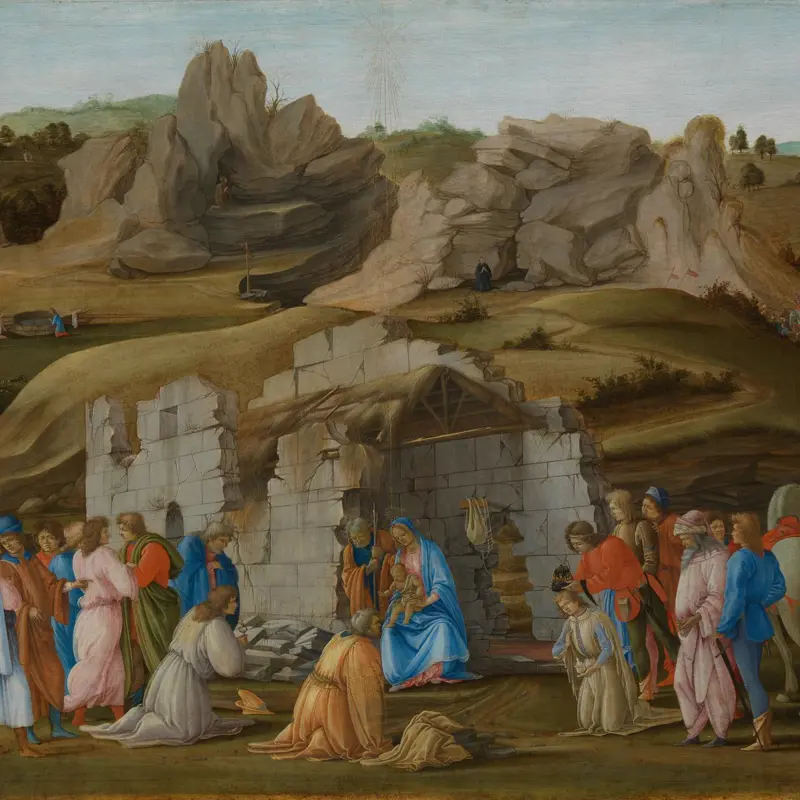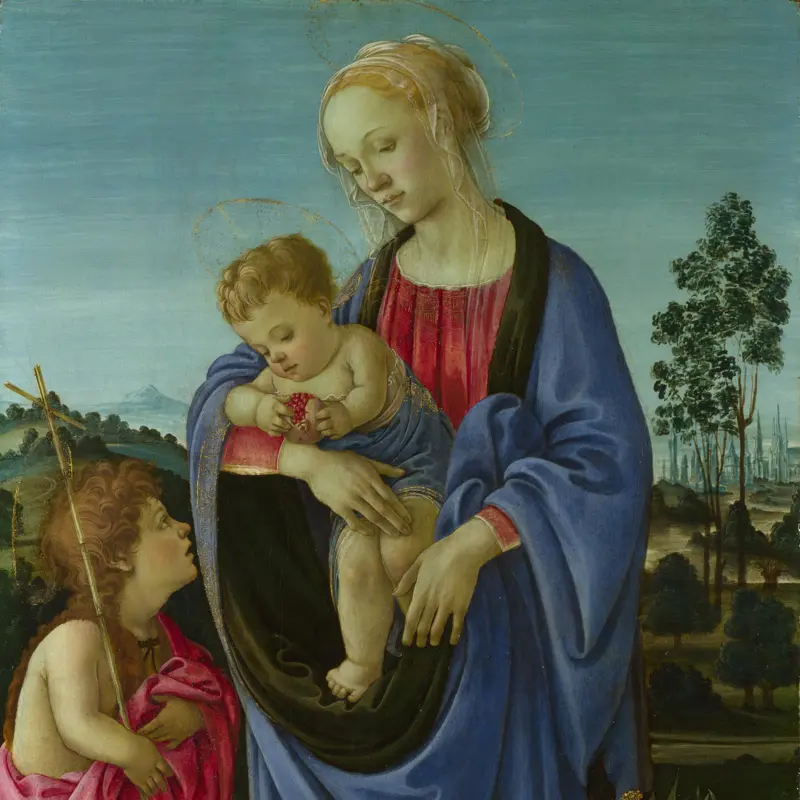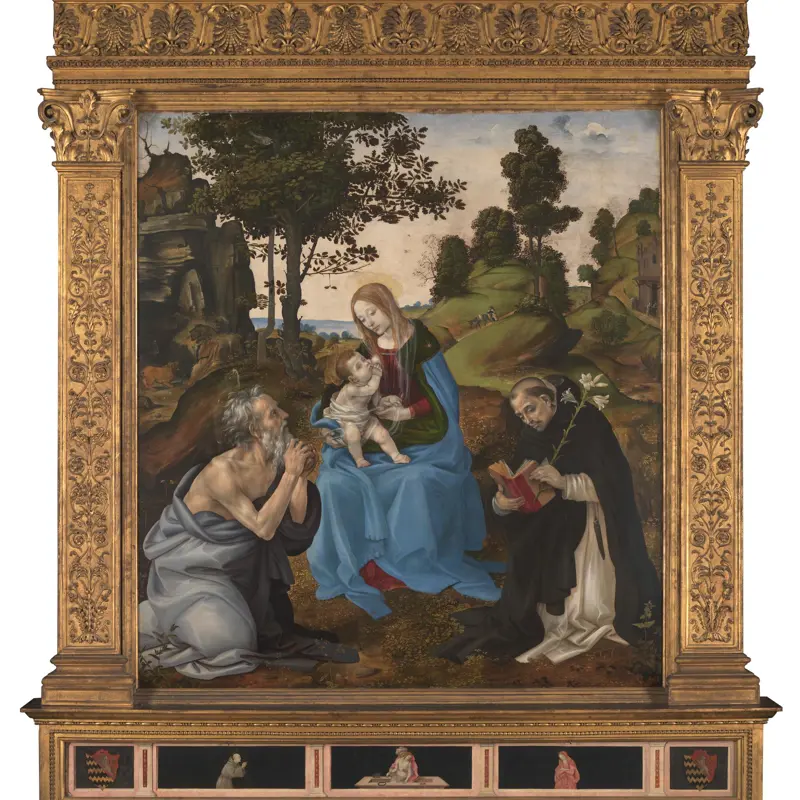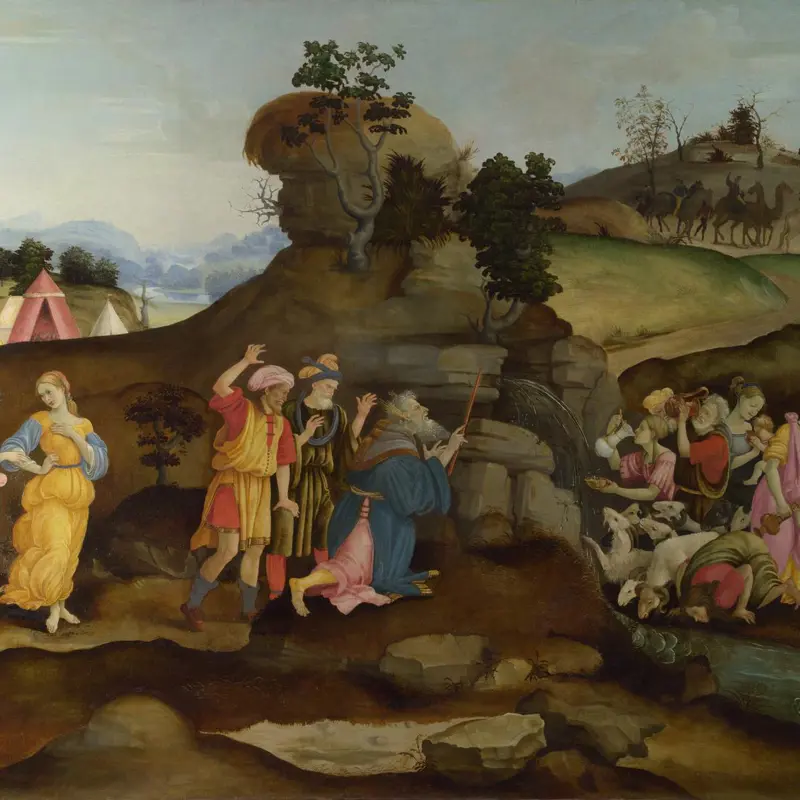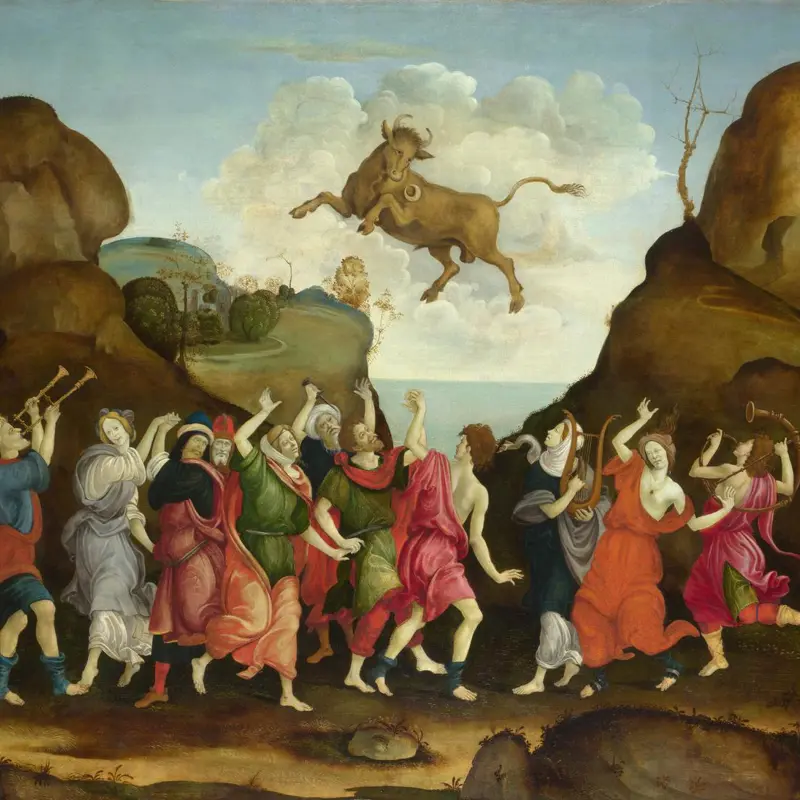Go behind the scenes in Conservation with Restorer Jill Dunkerton and Conservator Britta New as they remove the frame from Sandro Botticelli and Filippino Lippi's 'Adoration of the Kings'.
Sandro Botticelli and Filippino Lippi, 'Adoration of the Kings', about 1470
About the work
Overview
Images showing the Adoration of the Kings were particularly important in Florence, where the citizens celebrated Epiphany – the feast which commemorated the event – with costumed parades. The shape and scale of this picture suggest that it was made as part of a piece of furniture.
The vast entourage of the kings, including horses in decorated harnesses, is separated from the area occupied by the holy family (Christ, the Virgin Mary and Saint Joseph) by a wall with only a narrow opening. Two of the kings kneel in front of Christ; the one at the front is about to kiss his foot in homage.
Both Botticelli and Filippino worked on this picture. Botticelli was responsible for the large crowd to the left of the painting while Filippino’s starker, more elongated style of figure painting is seen in the group in the central foreground, which includes a kneeling man and the slightly bowing figure adjusting his right sleeve.
Key facts
Details
- Full title
- Adoration of the Kings
- Artist
- Sandro Botticelli and Filippino Lippi
- Artist dates
- about 1445 - 1510; about 1457 - 1504
- Date made
- about 1470
- Medium and support
- egg tempera on wood
- Dimensions
- 50.2 × 135.9 cm
- Acquisition credit
- Bought, 1857
- Inventory number
- NG592
- Location
- Room 60
- Collection
- Main Collection
- Frame
- 21st-century Replica Frame
Provenance
Additional information
Text extracted from the ‘Provenance’ section of the catalogue entry in Martin Davies, ‘National Gallery Catalogues: The Earlier Italian Schools’, London 1986; for further information, see the full catalogue entry.
Bibliography
-
1849F. Fantozzi, Nuova guida ovvero descrizione storico-artistico-critica della città e contorni di Firenze, Florence 1849
-
1883G. Morelli, Italian Masters in German Galleries, London 1883
-
1883J.P. Richter, Italian Art in the National Gallery, London 1883
-
1893H.C. Ulmann, Sandro Botticelli, Munich 1893
-
1903J.A. Crowe and G.B. Cavalcaselle, A History of Painting in Italy, Umbria, Florence and Siena, from the Second to the Sixteenth Century, ed. R.L. Douglas, 2nd edn, 6 vols, London 1903
-
1908H. Horne, Allessandro Filipepi, Commonly Called Sandro Botticelli, Painter of Florence, London 1908
-
1923R. van Marle, The Development of the Italian Schools of Painting, 19 vols, The Hague 1923
-
1931C. Gamba, 'Opere giovanili del Botticelli', Bollettino d'arte, XXV, 1931, pp. 493-504
-
1936C. Gamba, Botticelli, Milan 1936
-
1938J. Mesnil, Botticelli, Paris 1938
-
1942S. Bettini, Botticelli, Bergamo 1942
-
1951Davies, Martin, National Gallery Catalogues: The Earlier Italian Schools, London 1951
-
1953G. Robertson, 'The National Gallery Catalogue of Early Italian Schools', The Burlington Magazine, XCV/598, 1953
-
1955H. Ruhemann, 'Technical Analysis of an Early Painting by Botticelli', Studies in Conservation, II, 1955, pp. 17-40
-
1957C. Brandi, Saggi su Filippino Lippi, Florence 1957
-
1957E. Tietze-Conrat, Dwarfs and Jesters in Art, London 1957
-
1958R. Salvini, Tutta la pittura del Botticelli, Milan 1958
-
1961M. Davies, The Earlier Italian Schools, 2nd edn, London 1961
-
1962R. Salvini, 'Note sul Botticelli', in V. Martinelli and F.M. Aliberti Gaudioso (eds), Scritti di Storia dell'arte in onore di Mario Salmi, Rome 1962, vol. 2, pp. 299-328
-
1970R. Hatfield, 'The compagnia de Magi', Journal of the Warburg and Courtauld Institutes, XXXIII, 1970, pp. 107-61
-
1974G. Panhans, 'Florentiner Maler verarbeiten ein eyckisches Bild', Wiener Jahrbuch für Kunstgeschichte, XXVII, 1974, pp. 188-98
-
1976R. Hatfield, Botticelli's Uffizi 'Adoration': A Study in Pictorial Content, Princeton 1976
-
1978R. Lightbown, Sandro Botticelli, London 1978
-
1981M. Lisner, 'Leonardos Anbetung der Könige: Zum Sinngehalt und zur Komposition', Zeitschrift für Kunstgeschichte, XLIV, 1981, pp. 201-42
-
1984R. Salvini, Banchieri fiorentini e pittori di Fiandra, Modena 1984
-
1986Davies, Martin, National Gallery Catalogues: The Earlier Italian Schools, revised edn, London 1986
-
1989R. Lightbown, Sandro Botticelli: Life and Work, 2nd edn, London 1989
-
1990C. Caneva, Botticelli: Catalogo completo dei dipinti, Florence 1990
-
1991J. Dunkerton et al., Giotto to Dürer: Early Renaissance Painting in the National Gallery, New Haven 1991
-
1991D. Thiébaut, Botticelli, Paris 1991
-
1992A. Enderle, Kleine Menschen - große Kunst. Kleinwuchs aus künstlerischer und medizinischer Sicht, Hamm 1992
-
1992M.B. Hall, Colour and Meaning: Practice and Theory in Renaissance Painting, Cambridge 1992
-
1992P. Ventrone, Le tems revient: L tempo si rinuova: Feste e spettacoli nelle Firenze di Lorenzo il Magnifico (exh. cat. Palazzo Medici Riccardi, 8 April - 30 June 1990), Florence 1992
-
1993F. Cardini, La stella e i re. Mito e storia dei Magi, Florence 1993
-
1993J. Poeschke, Italienische Frührenaissance und nordeuropäisches Spätmittelalter, Munich 1993
-
1996L. Steinberg, The Sexuality of Christ in Renaissance Art and Modern Oblivion, 2nd edn, Chicago 1996
-
1997G.R. Goldner et al., The Drawings of Filippino Lippi and his Circle (exh. cat. Metropolitan Museum of Art, 28 October 1997 - 11 January 1998), New York 1997
-
1998R. Cassanelli, La bottega dell'artista: Tra Medioevo e Rinascimento, Milan 1998
-
1998M.W. Kwakkelstein, 'Botticelli, Leonardo and a Morris Dance', Print Quarterly, XV/1, 1998, pp. 3-14
-
1999G. Perry and C. Cunningham (eds), Academies, Museums and Canons of Art, London 1999
-
1999P.L. Rubin and A. Wright, Renaissance Florence: The Art of the 1470s, (exh. cat. The National Gallery, 20 October 1999 - 19 January 2000), London 1999
-
2001
C. Baker and T. Henry, The National Gallery: Complete Illustrated Catalogue, London 2001
-
2002D. Bomford et al., Underdrawings in Renaissance Paintings (exh. cat. The National Gallery, 30 October 2002 - 16 February 2003), London 2002
-
2004P. Nuttall, From Flanders to Florence: The Impact of Netherlandish Painting, 1400-1500, New Haven 2004
-
2004P. Zambrano and J.K. Nelson, Filippino Lippi, Milan 2004
-
2005A. Cecchi, Botticelli, Milan 2005
-
2006H. Körner, Botticelli, Cologne 2006
About this record
If you know more about this work or have spotted an error, please contact us. Please note that exhibition histories are listed from 2009 onwards. Bibliographies may not be complete; more comprehensive information is available in the National Gallery Library.

